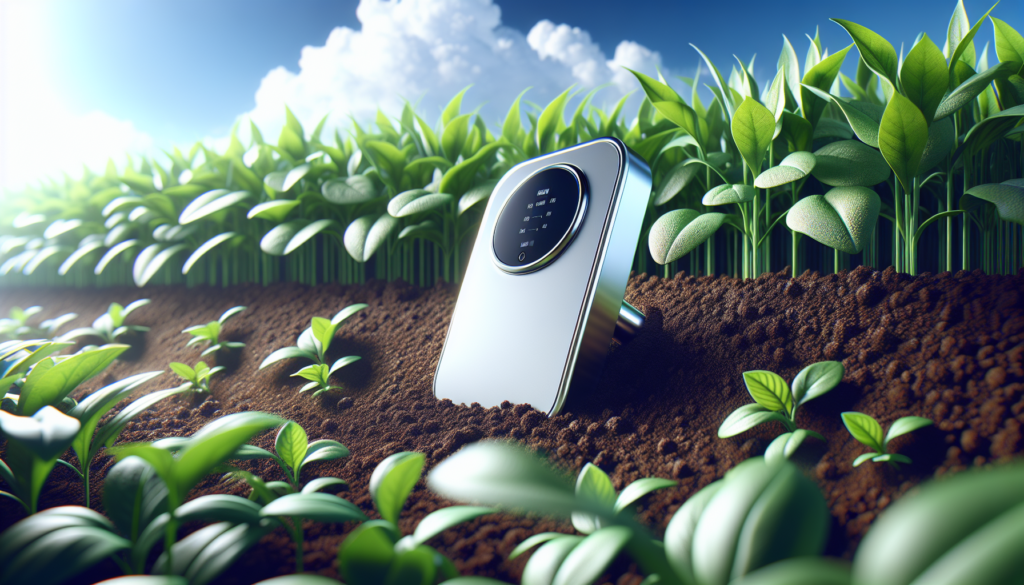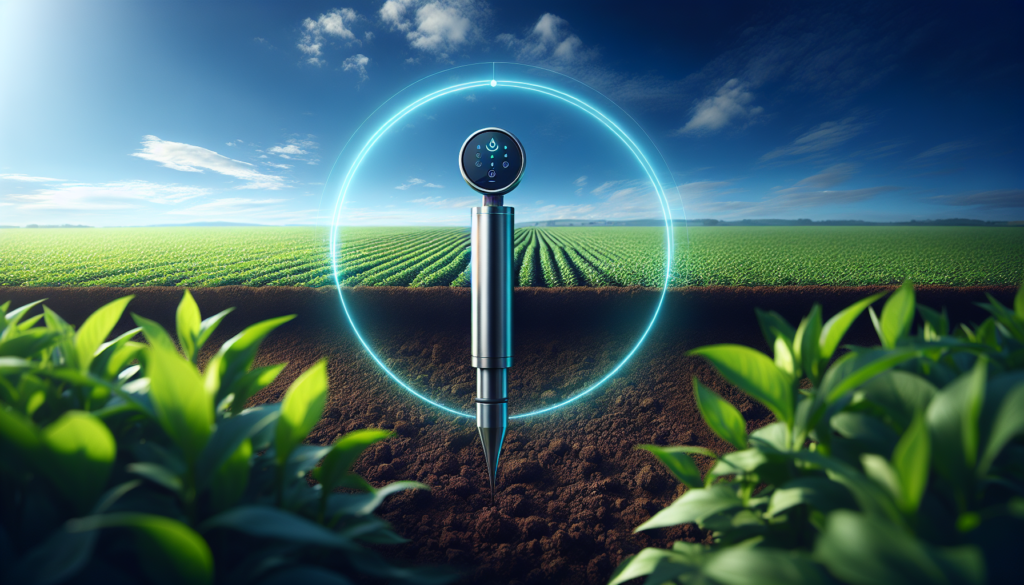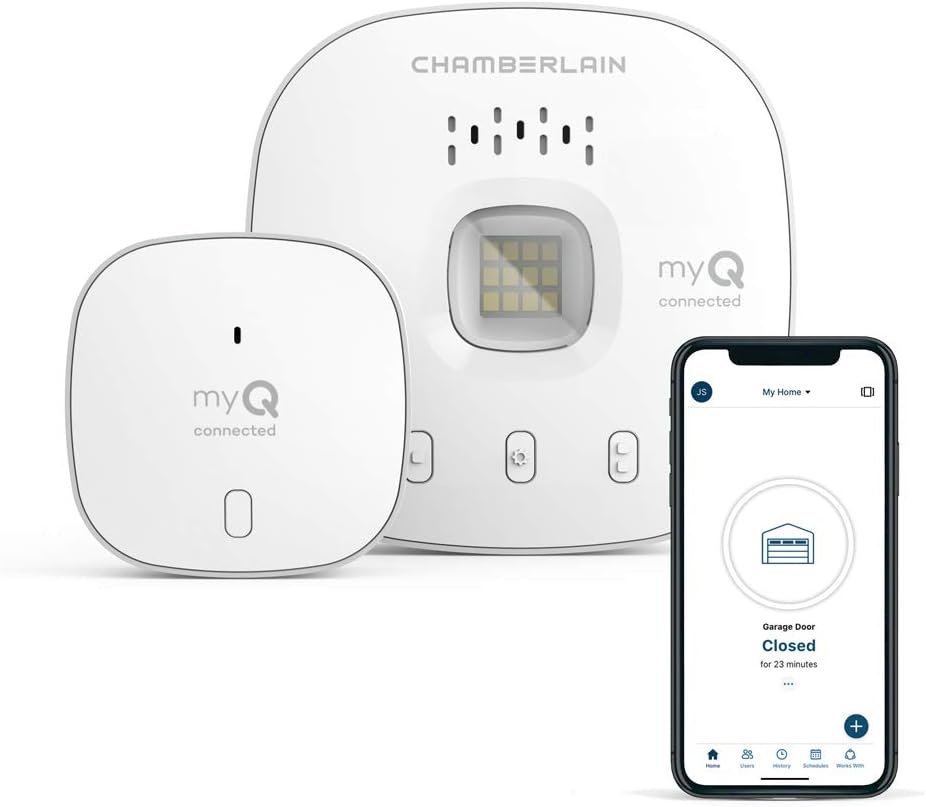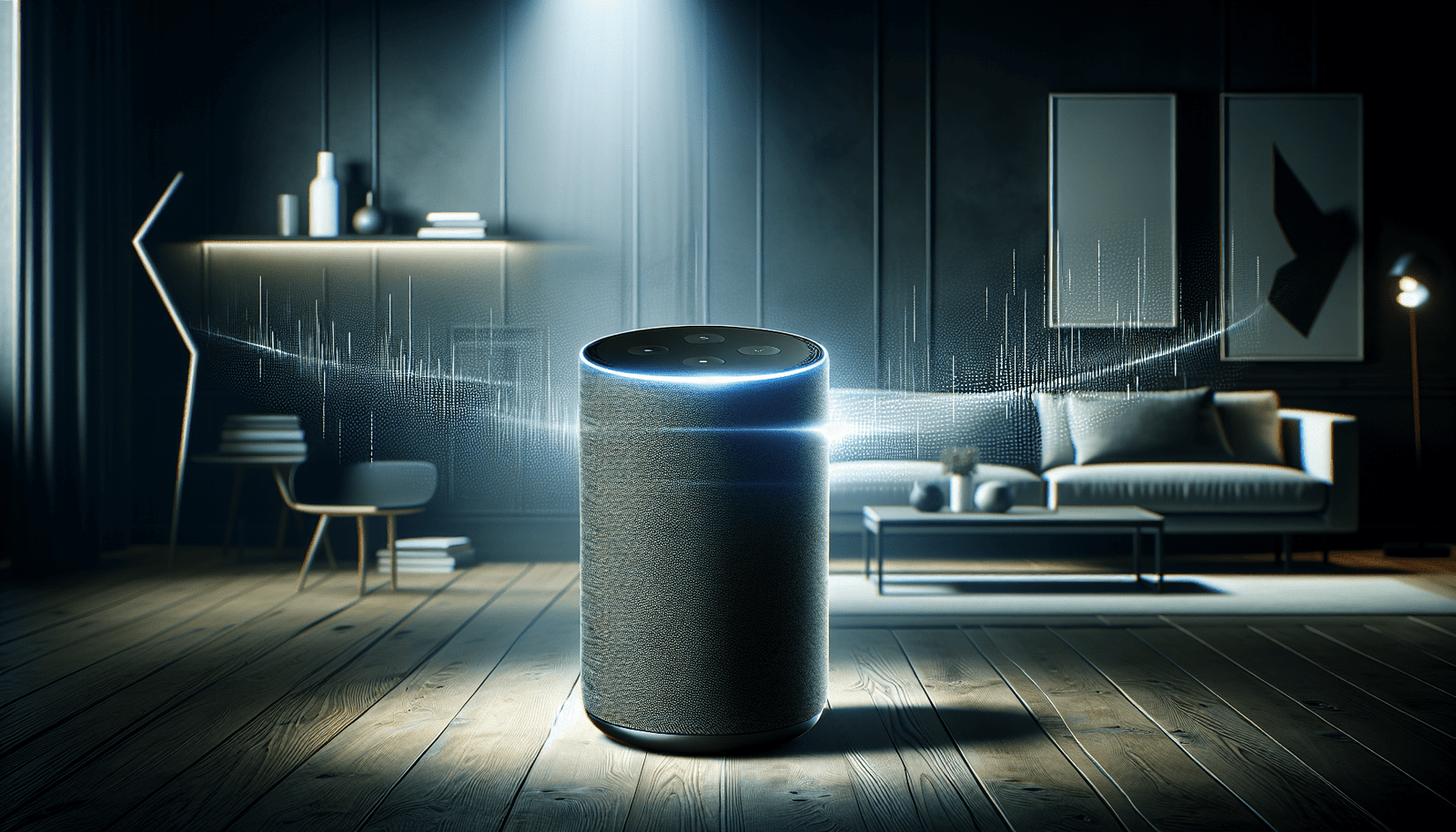Have you ever wondered how efficient your garden or lawn irrigation system could be if it adapted its watering schedule based on actual plant needs and environmental conditions? This concept is at the heart of smart irrigation systems, which blend technology and practicality to optimize water usage. A crucial component of these advanced systems is the soil moisture sensor. Let’s delve into how these sensors play a pivotal role in smart irrigation, why they’re beneficial for your plants and water bill, and how integrating them can contribute significantly to sustainability efforts.

Understanding Smart Irrigation
Smart irrigation refers to watering systems that utilize technology to enhance efficiency, saving water while improving plant health. Unlike traditional irrigation systems that often follow a set schedule regardless of weather conditions or soil moisture levels, smart irrigation systems adapt based on real-time data. This means no more wasting water on rainy days or under-watering during dry spells.
The Basics of Smart Irrigation Systems
At its core, a smart irrigation system connects various components that gather information about environmental conditions and then use it to optimize water delivery. These components might include weather sensors, soil moisture sensors, and a smart controller that processes data and adjusts the system’s watering schedule accordingly.
Benefits of Smart Irrigation Systems
Implementing a smart irrigation system has several benefits, including water conservation, financial savings, and healthier plants. By reducing unnecessary watering, these systems lower water bills and help conserve valuable resources. Additionally, plants are more likely to thrive when they receive watering tailored to their specific needs, reducing the risk of over or under-watering.
What Are Soil Moisture Sensors?
Soil moisture sensors are devices that monitor the amount of moisture present in the soil. They are a key component in smart irrigation systems, providing crucial data that guides watering schedules. By measuring the soil’s water content, these sensors ensure that irrigation systems only water when necessary, based on real-time conditions.
Types of Soil Moisture Sensors
There are several types of soil moisture sensors available, each with its own unique functionalities and benefits. Here are the most common types:
-
Capacitance Sensors: These measure the soil’s dielectric constant, which is affected by its water content. They’re known for their accuracy and ability to provide real-time data.
-
Tensiometers: These measure the tension of water within the soil, indicating how hard plants must work to absorb moisture. They’re particularly useful in areas with specific watering needs.
-
Resistance Blocks: These function by measuring electrical resistance that’s influenced by soil moisture levels. While less precise, they are a cost-effective option for many users.
How Soil Moisture Sensors Work
Soil moisture sensors work by inserting electrodes into the soil, which measure the moisture content around them. Depending on the sensor type, this data can be transmitted wirelessly to a smart controller that determines when and how much to water. This helps ensure optimal soil conditions are maintained for plant health.
Integrating Soil Moisture Sensors Into Your Smart Irrigation System
Integrating soil moisture sensors into your existing irrigation system can be a game-changer for water efficiency and plant care. Here’s how you can successfully incorporate them into your setup.
Steps to Integration
-
Choose the Right Sensor: Consider the types of plants in your garden, soil type, and your budget when selecting a sensor. Each sensor type has its own strengths and is suited to different environments and needs.
-
Install the Sensor Properly: Placement is crucial. Sensors should be placed in representative areas of your garden or lawn to ensure the data they collect accurately reflects the moisture levels where most plants are located.
-
Connect to a Smart Controller: A smart controller is an integral part of a smart irrigation system. It processes data from the soil moisture sensors and adjusts the watering schedule accordingly.
-
Monitor and Adjust: After installation, monitor your system to ensure it functions as expected. Make adjustments based on plant health and water use to continue optimizing your setup.
The Impact on Water Conservation and Cost Savings
One of the most compelling reasons to adopt smart irrigation systems with soil moisture sensors is their significant impact on water conservation and cost.
Water Conservation
By using data to inform watering decisions, these systems drastically reduce unnecessary water usage. This not only supports environmental sustainability but also ensures water resources are preserved for future generations.
Cost Savings
Although the upfront cost of smart irrigation systems can be higher than traditional systems, the long-term savings are substantial. Reduced water usage leads to lower water bills, quickly offsetting initial investments. Additionally, healthier plants often require less maintenance, further cutting costs.

Overcoming Challenges in Smart Irrigation
While smart irrigation systems with soil moisture sensors offer many benefits, users may encounter some challenges. Understanding these potential obstacles can help you navigate them effectively.
Common Issues
- Sensor Accuracy: Ensuring the accuracy of sensor data is vital. Regular calibration and maintenance of sensors are necessary to prevent errors.
- Cost of Installation: The initial investment can be a barrier for some homeowners. However, considering the long-term savings can justify the expense.
- Technical Know-How: Some users may feel intimidated by the technology involved. Many systems come with user-friendly platforms and customer support to assist with any issues.
Solutions and Tips
- Regular Maintenance: Make a habit of checking sensors and smart controllers for any issues. Regular maintenance ensures your system operates efficiently.
- Seek Help When Needed: Leverage resources and customer support offered by manufacturers. Don’t hesitate to hire a professional for installation if needed.
Embracing the Future of Irrigation
The integration of soil moisture sensors into smart irrigation systems represents a significant step forward in gardening technology. These systems not only advocate for sustainability but also provide practical solutions to common irrigation problems. As technology evolves, so too will the capabilities of these systems, offering even more innovative ways to manage water use and plant care.
Technological Advancements
Future advancements may include more precise sensors, enhanced connectivity, and even AI-driven systems that learn and adapt to your specific garden’s needs over time. As these technologies become more accessible, they will likely become a staple in homes committed to sustainability and efficient resource use.
Encouraging Sustainable Practices
Embracing smart irrigation systems with soil moisture sensors is a logical step for any eco-conscious homeowner. It not only contributes to a greener planet but also advances personal goals of creating a lush, healthy garden or lawn with minimal effort.
Conclusion
In summary, soil moisture sensors play an integral role in smart irrigation systems, providing vital data that leads to more efficient water use, healthier plants, and ultimately, cost savings. These systems are not only a boon to your garden or lawn but also a step toward a more sustainable future. By understanding and implementing this technology, you can make a significant impact on your water usage and environmental footprint. Whether you’re a seasoned gardener looking for efficiency or a technology enthusiast eager to implement smart solutions, integrating soil moisture sensors into your irrigation system is a decision that promises both immediate and long-term benefits.
Disclosure: As an Amazon Associate, I earn from qualifying purchases.






